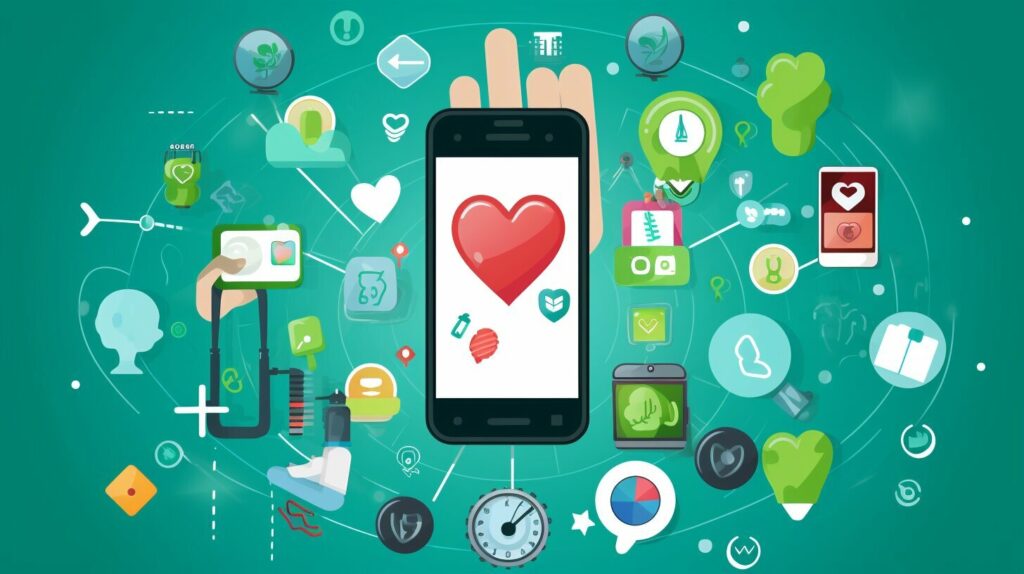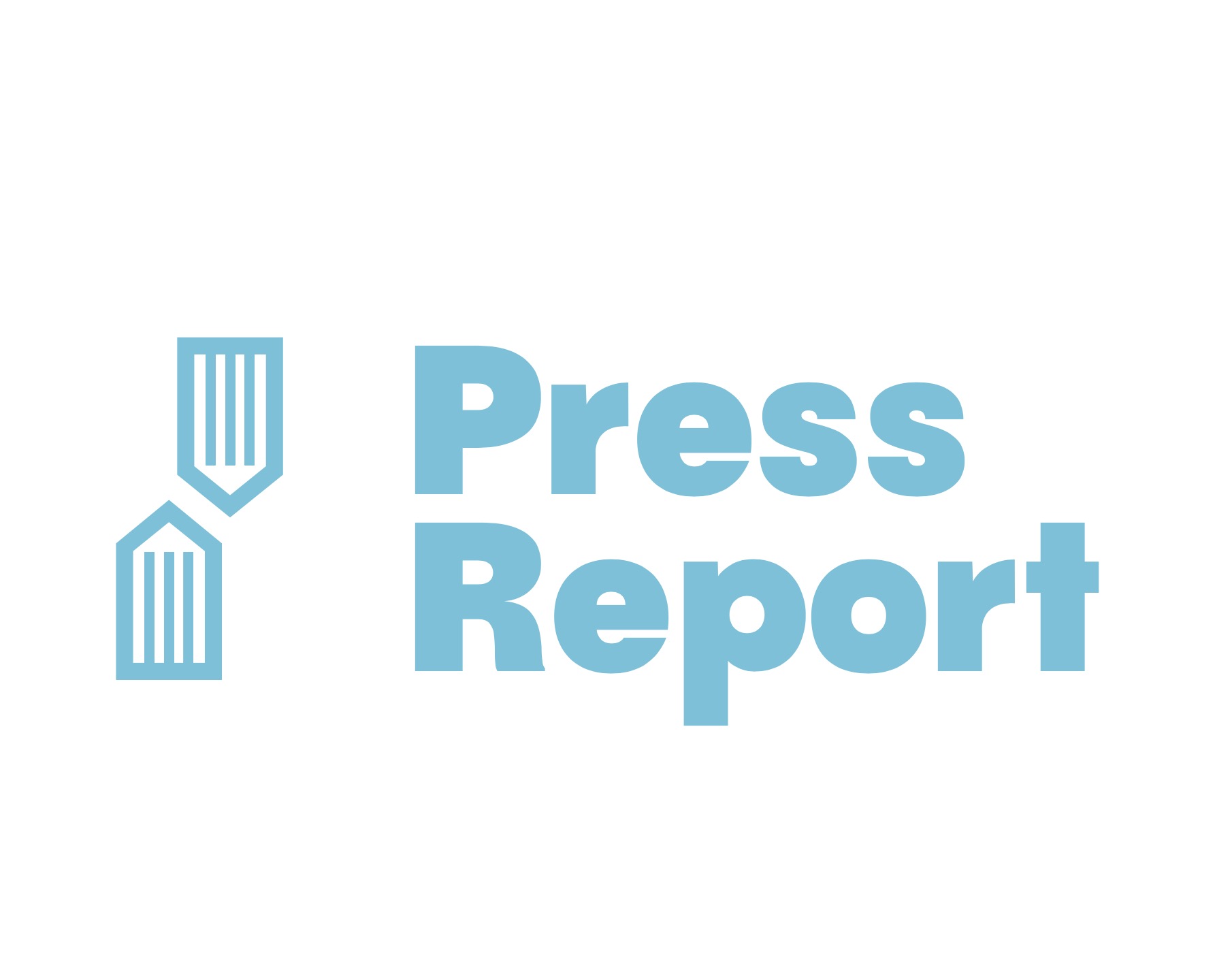AI in Medicine
Busting Myths About Sleep and Productivity

Studies in sleep science have debunked many common misconceptions about sleep and productivity. Amidst a sea of misinformation, it is essential to separate fact from fiction to understand the impact of sleep on our daily efficiency and well-being.
Key Takeaways:
- Sleep deprivation has negative effects on decision-making, memory, focus, and creativity.
- Sleep quality and continuity are equally important as sleep duration.
- Getting out of bed when unable to sleep can help improve sleep patterns.
- Alcohol before bed disrupts sleep quality and should be avoided.
- A cooler bedroom temperature promotes better sleep quality.
Myth: Your body gets used to lack of sleep.
Contrary to popular belief, research has shown that the body does not adapt to a lack of sleep. Sleep deprivation has significant negative effects on both the short-term and long-term health of our bodies. It not only hinders decision-making, memory, focus, and creativity, but it also increases the risk of various health problems.
Sleep deprivation can lead to metabolic disorders, cardiovascular issues, a weakened immune system, and even mental health problems. It is clear that sleep is fundamental for our overall well-being and should never be taken lightly. Simply put, our bodies do not adjust or function optimally without adequate sleep.
Furthermore, it is essential to note that sleep duration is not the only factor to consider. While getting the recommended amount of sleep is important, the quality of sleep and uninterrupted sleep also play a crucial role in our health and productivity. Sleep continuity ensures that we experience the necessary restorative stages of sleep, which are vital for our physical and mental rejuvenation.
Sleep deprivation takes a toll on our bodies and minds, affecting various aspects of our functioning. To optimize our well-being, we must prioritize both the quantity and quality of our sleep.
To summarize, the idea that our bodies can adjust to a lack of sleep is nothing more than a myth. Sleep deprivation has numerous negative effects on our overall health, impacting not only our cognitive abilities but also our physical well-being. Prioritizing sleep duration, quality, and continuity is crucial for promoting optimal health and productivity.
| Short-term Effects | Long-term Effects |
|---|---|
| – Impaired decision-making | – Metabolic disorders |
| – Memory problems | – Cardiovascular issues |
| – Lack of focus | – Weakened immune system |
| – Decreased creativity | – Mental health problems |
Myth: How long you sleep is all that matters
When it comes to sleep, many people believe that the duration of their slumber is the sole determinant of its quality. However, this is a common misconception. While sleep duration certainly plays a role, it is not the only factor that matters for a restful and rejuvenating sleep experience. In fact, the significance of sleep quality and continuity should not be overlooked.
Sleep quality refers to the overall effectiveness of the sleep cycle and the depth of rest achieved during each stage. Even if you manage to sleep for a long period of time, if the quality of your sleep is poor, you may still wake up feeling tired and groggy.
Sleep continuity refers to the degree to which your sleep is uninterrupted throughout the night. Fragmented sleep with frequent awakenings can disrupt the natural flow of sleep stages, preventing you from reaching the deep, restorative phases of sleep that are crucial for physical and mental rejuvenation.
Research has shown that sleep interruptions and poor sleep continuity can have a significant impact on various aspects of our well-being. These include our cognitive function, emotional stability, immune system health, and even our ability to perform daily tasks efficiently.
To illustrate the importance of sleep quality and continuity, consider a scenario where you sleep for a solid eight hours but experience numerous awakenings throughout the night. Despite the seemingly adequate duration of sleep, the interruptions prevent you from achieving the deep, rejuvenating sleep your body needs. As a result, you may wake up feeling fatigued, lacking focus, and unable to perform at your best.
So, while it’s important to aim for an optimal amount of sleep each night, it is equally crucial to prioritize the actual quality and continuity of your sleep. This involves creating a sleep-friendly environment, establishing a consistent bedtime routine, and addressing any underlying sleep disturbances or conditions that may be interfering with your rest. By prioritizing both the quantity and quality of sleep, you can maximize the restorative benefits of a good night’s rest.
What the experts say:
“We now know that sleep quality and continuity are just as important as sleep duration when it comes to reaping the benefits of a good night’s rest. Even if you manage to sleep for the recommended number of hours, frequent interruptions can disrupt the restorative stages of sleep and leave you feeling tired and unfocused.” – Dr. Sleep Expert
The importance of sleep quality and continuity
| Benefits of Sleep Quality | Benefits of Sleep Continuity |
|---|---|
|
|
By recognizing the significance of sleep quality and continuity, you can prioritize the factors that truly contribute to a restful and rejuvenating sleep experience. Remember, a good night’s sleep is not just about how long you sleep, but also how effectively and seamlessly you traverse the stages of sleep.
Myth: If you are having trouble falling asleep, stay in bed until you can.
When it comes to trouble falling asleep, many of us believe that staying in bed and waiting for sleep to come is the best approach. However, this myth can actually worsen our sleep patterns and leave us feeling restless.
Instead, it’s important to break the association of bed with restlessness. When you find yourself unable to sleep, it’s better to get up and engage in a relaxing activity in a dimly lit setting. For example, you can try reading a book or practicing deep breathing exercises. By doing this, you create a positive association between your bed and sleep, allowing your mind and body to relax and prepare for restful sleep.
Benefits of Getting Out of Bed:
- Reduced restlessness: Getting out of bed helps to prevent restlessness from building up, allowing you to feel more relaxed when you return to bed.
- Positive sleep association: Engaging in a relaxing activity outside of bed helps to create a positive association between your bed and sleep.
- Improved sleep quality: Breaking the cycle of lying in bed when unable to sleep can help improve your sleep quality over time.
By implementing the practice of getting out of bed when you’re unable to sleep, you can break the cycle of restlessness and set the stage for a more restful night’s sleep. It’s important to remember that everyone’s sleep patterns are unique, so it may take some trial and error to find the best approach for you.
| Myth | Truth |
|---|---|
| If you are having trouble falling asleep, stay in bed until you can. | Get out of bed and engage in a relaxing activity until you feel drowsy. |
| Staying in bed perpetuates restlessness and can worsen sleep patterns. | Getting out of bed breaks the association of bed with restlessness and helps create a positive sleep connection. |
| Engaging in a relaxing activity outside of bed promotes relaxation and improves sleep quality. |
Myth: Alcohol before bed improves sleep.
Many people believe that having a drink or two before bed can help them sleep better. However, the truth is quite the opposite. While alcohol may initially induce drowsiness, it actually disrupts the quality of sleep, leading to negative effects on our overall restfulness and well-being.
When we consume alcohol, it interferes with our sleep cycles, causing more frequent awakenings throughout the night. This disrupts the natural progression of deep and REM sleep, which are essential for restoring our bodies and minds.
Not only does alcohol disrupt sleep cycles, but it can worsen existing sleep disorders, such as snoring and sleep apnea. It relaxes the muscles in the throat and can increase the intensity of snoring, leading to more interrupted sleep. For individuals with sleep apnea, alcohol can further obstruct the airways, exacerbating the condition.
To illustrate the negative effects of alcohol on sleep, here is a table highlighting the various ways it impacts our rest:
| Negative Effects of Alcohol on Sleep |
|---|
| Increased awakenings throughout the night |
| Worsened snoring and sleep apnea |
| Disruption of sleep cycles |
As the table shows, alcohol has a significant impact on the quality of our sleep. To improve the quality of your sleep, it’s important to reduce or eliminate alcohol consumption before bed. Instead, opt for a calming nighttime routine that promotes relaxation and healthy sleep habits.
“Alcohol disrupts the quality of sleep, leading to more frequent awakenings throughout the night.”
Remember, a good night’s sleep is crucial for our overall health and well-being. By avoiding alcohol before bed, you can ensure that you’re giving your body the best chance to achieve restful and rejuvenating sleep.

A Warm Bedroom Temperature: Myth or Reality?
When it comes to creating the perfect sleep environment, many believe that a warm bedroom temperature is the key to a restful night’s sleep. However, recent studies challenge this common misconception, revealing the benefits of a cooler sleeping environment. Contrary to popular belief, maintaining a temperature of around mid-60s Fahrenheit in the bedroom can actually promote better sleep quality and improve overall well-being.
It’s true that a warm and cozy bedroom can seem inviting, especially during colder months. But, our bodies naturally cool down during sleep, and a hot room can disrupt this cooling process, leading to unwanted awakenings and disturbed sleep patterns. Keeping the bedroom temperature in the cooler range encourages the body’s natural cooling mechanisms and promotes more restorative sleep.
In addition to preventing sleep disruptions, a cooler bedroom temperature offers other significant benefits. Research has shown that a cooler sleep environment can enhance the production of melatonin, the hormone responsible for regulating sleep-wake cycles, promoting faster sleep onset and a more synchronized sleep pattern overall.
Moreover, a cool sleep environment has been found to have a positive effect on reducing the risk of nightmares, night sweats, and respiratory problems associated with hot and stuffy rooms. It can also benefit individuals who suffer from certain sleep disorders, such as insomnia and sleep apnea.
So, what is the optimal bedroom temperature for sleep? The consensus among sleep experts is to maintain a temperature in the range of 60-67 degrees Fahrenheit (15-19 degrees Celsius) for an optimal sleep environment. However, personal preferences may vary. Experimenting with different temperature settings can help identify the ideal sleep temperature that works best for you.
The Drawbacks of a Warm Bedroom
While a warm bedroom may initially provide a sense of comfort, it’s important to consider the potential drawbacks. Here are a few reasons why a warm sleep environment may not be the best choice:
- Disrupted sleep continuity: High temperatures can result in increased wakefulness, leading to a fragmented sleep experience.
- Excessive sweating: A hot sleep environment can cause excessive sweating, making it uncomfortable and disrupting sleep.
- Increased risk of dehydration: Warm temperatures can contribute to dehydration during the night, which can negatively impact sleep quality.
- Difficulty regulating body temperature: A warm sleep environment can hinder the body’s natural ability to regulate its temperature, leading to discomfort and sleep disturbances.
- Worsening of existing sleep disorders: Individuals with sleep disorders such as insomnia or sleep apnea may experience exacerbated symptoms in a warm bedroom.
“Maintaining a cooler temperature promotes better sleep quality.”
By prioritizing a cooler bedroom temperature, you can create an optimal sleep environment that promotes better sleep quality and overall well-being. Embracing a cooler sleep environment can enhance your sleep experience and help you wake up feeling refreshed and rejuvenated.
Myth: Sleeping with a Light On is Harmless
Sleeping with a light on may seem harmless, but it can actually have negative effects on our sleep quality and overall well-being. Even when our eyes are closed, exposure to low levels of light during sleep can impact our circadian rhythm and increase the risk of awakenings.
Research suggests that sleeping with too much light in the bedroom can interfere with the production of melatonin, a hormone that promotes sleep. When melatonin levels are disrupted, it becomes harder to fall asleep and maintain a deep, restorative sleep.

Additionally, sleeping with a light on can lead to eye strain and potentially contribute to weight gain. Exposure to light during sleep hours can disrupt the body’s natural sleep-wake cycle, making it difficult to achieve optimal sleep and potentially affecting our metabolism.
To ensure higher-quality sleep and maintain a stable circadian rhythm, it is best to sleep in a dark room. Consider using blackout curtains, shades, or blinds to minimize external light sources. If complete darkness is not achievable, using an eye mask can also help block out unwanted light and promote better sleep.
Creating a sleep environment that prioritizes darkness can enhance your sleep quality and ensure you wake up feeling refreshed and well-rested.
Myth: You eat spiders in your sleep
The widely spread myth of eating spiders in sleep has no evidence to support it. Spiders are unlikely to willingly crawl into a person’s mouth, and the chances of swallowing one during sleep are extremely low. The myth may have originated from the desire to shock or fear of spiders, which affects a significant percentage of the population.
While many people find the thought of spiders crawling into their mouths while they sleep unsettling, it is important to remember that it is simply a myth with no scientific basis. Spiders tend to avoid humans and prefer their natural habitats. The chances of a spider willingly entering a person’s mouth are slim to none.
Additionally, the human body has natural reflexes and protective mechanisms that would make it highly unlikely for a spider to be swallowed while sleeping. The idea that people unknowingly consume spiders in their sleep is simply unfounded and lacks any concrete evidence.
It is worth noting that the myth of eating spiders in sleep has been perpetuated over the years, resulting in widespread belief. However, it is important to rely on scientific evidence and critical thinking when evaluating such claims.
So, rest assured that you can sleep soundly without the fear of accidentally ingesting any eight-legged creatures.
Myth: Women and men have equal risk of insomnia.
Contrary to popular belief, gender differences play a significant role in the occurrence of insomnia. Research has consistently shown that women are more likely to experience sleep disturbances and difficulties compared to men. Various factors contribute to this disparity, exposing women to a higher risk of insomnia. Let’s explore some of the key reasons behind this gender difference.
- Hormone fluctuations: Women experience hormonal changes throughout their reproductive years, particularly during menstruation, pregnancy, and menopause. These fluctuations can disrupt the natural sleep-wake cycle and contribute to sleep difficulties.
- Mood disorders: Conditions such as depression and anxiety are more prevalent in women and are known to negatively impact sleep. These disorders can lead to insomnia and make it challenging to maintain healthy sleep patterns.
- Excessive stress levels: Women often face unique stressors in their personal and professional lives, which can significantly affect sleep. Chronic stress can lead to increased difficulties falling asleep, staying asleep, and obtaining quality rest.
- Sleep disorders: Certain sleep disorders like sleep apnea and restless legs syndrome may be more common in women and can contribute to sleep disruptions and insomnia.
Pregnancy, a transformative period in a woman’s life, is often accompanied by sleep disturbances. Approximately half of pregnant individuals report experiencing poor sleep regularly. Hormonal changes, physical discomfort, frequent urination, and the anticipation of motherhood can all contribute to sleep difficulties during this time.
It is important to note that women may also be at a higher risk of underdiagnosis for sleep-disrupting conditions, such as sleep apnea. Symptoms of sleep apnea in women may differ from those commonly observed in men, leading to potential misdiagnosis or underrecognition of the condition.
In conclusion, gender differences significantly impact the risk of insomnia, with women being more susceptible to sleep disturbances. Understanding these factors can help healthcare professionals and individuals develop targeted interventions and strategies for better sleep health and overall well-being.
| Factors contributing to gender differences in insomnia | Impact on sleep |
|---|---|
| Hormone fluctuations | Disrupt the natural sleep-wake cycle |
| Mood disorders | Lead to difficulties falling asleep and maintaining healthy sleep patterns |
| Excessive stress levels | Result in increased sleep difficulties |
| Sleep disorders | Contribute to sleep disruptions and insomnia |
| Pregnancy | Commonly accompanied by sleep disturbances |

Myth: Napping makes up for a lack of nighttime sleep.
While a quick nap can provide an energy boost during the day, it cannot fully compensate for inadequate nighttime sleep. Napping might seem like a tempting solution to combat sleep deprivation, but it comes with its drawbacks. Relying solely on naps to make up for a lack of nighttime sleep can lead to a host of problems.
Napping can disrupt the sleep schedule, making it harder to fall asleep at a normal time. Our bodies have a natural rhythm, known as the circadian rhythm, that regulates our sleep-wake cycle. Taking long or late naps may interfere with this rhythm, causing difficulty in getting a restful night’s sleep when it’s time to hit the bed.
Long naps can also leave a person feeling disoriented and sluggish upon waking up. This phenomenon, known as sleep inertia, occurs when we awaken from a deep sleep, leading to grogginess and reduced cognitive performance. This can have a negative impact on productivity and overall daily functioning.
So, what’s the optimal duration for a nap? Research suggests that keeping naps shorter than 30 minutes is ideal. This allows you to reap the benefits of a quick boost in alertness and post-nap performance without diving into deeper stages of sleep that can cause sleep inertia.
Additionally, timing is crucial when incorporating napping into your routine. To avoid interfering with your nighttime sleep, it is best to take naps early in the afternoon. This ensures that you have enough time for the sleep pressure to build up before bedtime, promoting a more restful and consolidated night of sleep.
Napping can be a valuable tool in combating daytime fatigue, but it should not replace a proper nighttime sleep routine. By keeping naps short and timing them appropriately, you can enjoy the benefits of a quick recharge without compromising your overall sleep quality and schedule.
It is important to note that individuals with specific sleep disorders or medical conditions may have different guidelines or recommendations regarding napping. Consulting with a healthcare professional can provide personalized advice tailored to your specific needs.
| Drawbacks of Relying on Naps | Optimal Nap Duration |
|---|---|
|
Shorter than 30 minutes |
Takeaway: While napping can provide a temporary energy boost, it cannot replace a full night of quality sleep. Keeping naps short and timed appropriately can help prevent negative effects on nighttime sleep and maximize the benefits of a quick snooze.
Myth: Snoring is harmless and nothing can be done to reduce it.
While light snoring may not be a problem, loud and frequent snoring can be a symptom of sleep apnea. Sleep apnea is associated with obesity and can lead to cardiovascular strain due to decreased oxygen levels. Snorers, especially those with pauses in breathing, should seek medical evaluation for potential sleep apnea. Addressing snoring can improve sleep quality and overall health.

| Snoring and Health Risks | Relationship between Snoring and Sleep Apnea | Importance of Seeking Treatment for Snoring |
|---|---|---|
| Snoring, especially loud and frequent snoring, can be a sign of potential health risks. | Snoring can indicate sleep apnea, a sleep disorder associated with obesity and cardiovascular strain. | Seeking medical evaluation for snoring can address underlying sleep apnea and improve overall health. |
| Snoring can disrupt sleep quality and lead to daytime fatigue. | Sleep apnea involves pauses in breathing during sleep, resulting in decreased oxygen levels. | Untreated snoring and sleep apnea can negatively impact cardiovascular health. |
| Snorers, particularly those with pauses in breathing, should consult healthcare professionals. | Proper diagnosis and treatment of sleep apnea can improve sleep quality and overall well-being. | Addressing snoring can reduce sleep-related health risks and enhance overall quality of life. |
Myth: Your body gets used to lack of sleep
Excessive daytime sleepiness is a common concern for many individuals. It can impact our productivity, ability to concentrate, and overall quality of life. Contrary to popular belief, the notion that our bodies can adapt to a lack of sleep is nothing more than a myth.
While it is true that our bodies can temporarily adjust to a sleep deficit, the long-term consequences of sleep deprivation cannot be ignored. Even after getting sufficient sleep at night, some people may experience persistent daytime sleepiness, also known as excessive daytime fatigue. If left untreated, excessive daytime fatigue can have serious implications for both our mental and physical well-being.
There are various medical conditions that can cause daytime sleepiness, such as narcolepsy and sleep apnea. Narcolepsy is a neurological disorder characterized by sudden and uncontrollable episodes of sleep during the day, while sleep apnea is a condition in which breathing repeatedly stops and starts during sleep, leading to frequent awakenings and poor sleep quality. Both conditions can result in excessive daytime fatigue and should be properly diagnosed and treated under the guidance of healthcare professionals.
Risks associated with excessive daytime fatigue extend beyond impaired productivity and performance. Drowsy driving, for example, poses a significant threat to road safety. Studies have shown that driving while drowsy can impair our reaction times, decision-making abilities, and alertness, increasing the risk of accidents and injury. It is estimated that drowsy driving contributes to thousands of crashes each year, resulting in injuries and fatalities.
Medical Conditions Causing Daytime Sleepiness:
| Medical Conditions | Characteristics |
|---|---|
| Narcolepsy | Sudden and uncontrollable sleep episodes during the day |
| Sleep apnea | Repeated breathing interruptions during sleep, leading to poor sleep quality |
If you find yourself experiencing excessive daytime fatigue or suspect an underlying medical condition, it is important to seek medical advice and undergo appropriate evaluation. A healthcare professional can help diagnose the cause of your daytime sleepiness and recommend suitable treatment options to improve your sleep quality and enhance your overall well-being.
Addressing excessive daytime sleepiness is crucial for our health, safety, and productivity. By debunking the myth that our bodies can adapt to a lack of sleep, we can raise awareness about the importance of addressing underlying medical conditions causing excessive daytime fatigue. Don’t ignore the signs of excessive sleepiness, and prioritize your sleep health for a better and more vibrant life.
Myth: You can make up for the zzz’s you skipped the night before with some extra shut eye later on.
Many of us believe that we can compensate for a lack of sleep by getting some extra snooze time later. However, this is just a myth. Accumulating sleep debt by consistently not getting enough sleep can have serious consequences for our overall well-being, performance, and safety.
Sleep deprivation not only leaves us feeling groggy and fatigued, but it can also have long-term health effects. Studies have linked insufficient sleep to a range of health problems, including high blood pressure, obesity, depression, and cognitive impairments. These health consequences emphasize the importance of prioritizing regular sleep patterns and ensuring that we get the recommended seven to nine hours of sleep each night.
Aiming for regular and sufficient sleep is crucial for maintaining optimal physical and mental health. By understanding the risks associated with sleep deprivation and taking steps to establish healthy sleep habits, we can prioritize our well-being and ensure that we are giving our bodies the rest they need to function at their best.

| Consequence | Description |
|---|---|
| High blood pressure | Prolonged sleep deprivation has been linked to an increased risk of hypertension. |
| Obesity | Lack of sleep can disrupt hormone regulation, leading to weight gain and an increased risk of obesity. |
| Depression | Sleep deprivation is associated with higher rates of depression and can worsen existing mental health conditions. |
| Cognitive issues | Poor sleep affects our cognitive function, impairing memory, focus, attention, and decision-making abilities. |
Myth: Snoring is common and not harmful.
Snoring is often considered a common and harmless occurrence during sleep. However, it is essential to understand that excessive snoring, especially in men, can be a symptom of a more serious condition called sleep apnea.
Sleep apnea is a sleep disorder characterized by frequent pauses in breathing during sleep. These pauses can be brief but can cause a significant strain on the cardiovascular system and lead to various health risks.
One of the main cardiovascular risks associated with sleep apnea is decreased blood oxygen levels. When breathing pauses, oxygen levels in the blood drop, putting stress on the heart and other organs in the body. Over time, this strain can increase the likelihood of developing cardiovascular diseases such as hypertension, heart attack, and stroke.
It is important not to ignore loud and persistent snoring, as it may indicate an underlying sleep apnea condition. Seeking medical evaluation for potential sleep apnea is crucial to identify and address the issue before it leads to further complications.
Preventing Cardiovascular Risks
To reduce the cardiovascular risks associated with sleep apnea, individuals who snore loudly should consider the following approaches:
-
Consult a healthcare professional: A medical evaluation can help determine if sleep apnea is causing the snoring and guide appropriate treatment options.
-
Weight management: Obesity is a major risk factor for sleep apnea. Losing weight through a balanced diet and regular exercise may help alleviate symptoms.
-
Continuous Positive Airway Pressure (CPAP) therapy: CPAP machines deliver a constant stream of air to the airways, preventing them from collapsing during sleep and reducing snoring and apnea episodes.
-
Oral appliances: Dentists can provide custom-made oral devices that help keep the airways open during sleep, reducing snoring and improving breathing.
-
Lifestyle modifications: Avoiding alcohol and sedatives, sleeping on the side instead of the back, and maintaining a consistent sleep schedule are all recommended lifestyle changes to support better sleep and minimize snoring.
By addressing snoring and sleep apnea, individuals can improve their sleep quality, reduce cardiovascular risks, and enhance their overall health and well-being.
Myth: Teens Don’t Require More Sleep than Adults, and Drowsy Teens in Class are Lazy
Contrary to popular belief, teenagers have different sleep needs compared to adults. While adults generally require 7-9 hours of sleep per night, teenagers need more sleep to support their growing bodies and developing brains. The National Sleep Foundation recommends that teens get around 8.5-9.5 hours of sleep every night for optimal health and well-being. Unfortunately, many teens struggle to meet these sleep requirements due to a variety of factors.
One significant factor that often disrupts teenagers’ sleep is their late sleep-wake patterns. The hormonal changes during adolescence cause a shift in circadian rhythms, making it challenging for teens to fall asleep early and wake up early. This becomes especially problematic when combined with early school start times, forcing teens to wake up earlier than their natural biological clock allows. As a result, many teens experience drowsiness and fatigue during the day, which can have a significant impact on their ability to concentrate and learn effectively.
Drowsiness in class is not indicative of laziness on the part of teenagers. Insufficient sleep can lead to difficulties with attention, memory, decision-making, and problem-solving. When teens are unable to get the sleep they need, their academic performance and overall well-being may suffer. It is essential for parents, educators, and policymakers to understand the sleep needs of teenagers and take steps to support their healthy sleep habits.
Setting consistent sleep schedules is crucial for teenagers to get the sleep they require. Encouraging them to establish a regular bedtime and wake-up time can help regulate their sleep-wake cycles and promote better-quality sleep. It is also essential to create an environment conducive to sleep, with a comfortable and quiet bedroom free from distractions like electronic devices.
By prioritizing teenagers’ sleep needs and educating them about the importance of quality sleep, we can help them thrive academically, emotionally, and physically.
In conclusion, debunking the myth that teens don’t require more sleep than adults is crucial for promoting their overall well-being. Insufficient sleep can have a detrimental impact on teenagers’ cognitive and physical health. By setting consistent sleep schedules and fostering a sleep-friendly environment, we can support teens in getting the sleep they need for optimal growth and development.
Conclusion
When it comes to sleep and productivity, it is important to separate fact from fiction. By debunking common myths, we can gain a better understanding of how sleep truly impacts our daily performance and overall well-being. It is not true that our bodies can adapt to lack of sleep; in fact, sleep deprivation has both short-term and long-term negative effects on our decision-making, memory, focus, and creativity. Sleep quality and continuity are equally important as sleep duration, as fragmented sleep with frequent awakenings can interfere with the restorative stages of sleep.
Contrary to popular belief, staying in bed when struggling to fall asleep can have a negative impact on sleep patterns. It is better to get up and engage in a relaxing activity until drowsiness sets in to avoid associating the bed with restlessness. Additionally, while alcohol may induce drowsiness, it disrupts the quality of sleep, leading to more awakenings and interference with sleep cycles. It is crucial to reduce or eliminate alcohol consumption before bed.
A warm bedroom temperature may feel cozy, but studies show that a cooler bedroom temperature, around mid-60s Fahrenheit, is more conducive to sleep. Sleeping with a light on, even when our eyes are closed, can increase the risk of awakenings and disrupt our circadian rhythm. It is best to sleep in a dark room or use an eye mask for better sleep quality.
In conclusion, prioritizing both sleep duration and quality can greatly improve productivity and overall health. If you have persistent sleep concerns or disorders, it is important to consult healthcare professionals for proper guidance and treatment. By dispelling myths and embracing evidence-based knowledge, we can optimize our sleep habits and enhance our well-being.
No, sleep deprivation has both short-term and long-term negative effects on the body, including hindering decision-making, memory, focus, and creativity. It can also lead to various health problems, such as metabolic disorders, cardiovascular issues, weakened immune system, and mental health issues.
No, sleep quality and continuity also play a crucial role in maximizing the benefits of sleep. Fragmented sleep with frequent awakenings can interfere with the restorative stages of sleep. It is important to prioritize both the quantity and quality of sleep for optimal well-being.
No, staying in bed when you’re struggling to fall asleep can have a negative impact on your sleep patterns. It is better to get up and engage in a relaxing activity in a dim setting, such as reading a book, until you feel drowsy. This helps to associate your bed with sleep and avoid feelings of restlessness. No, while a drink or two may induce drowsiness, alcohol actually disrupts the quality of sleep. It can lead to more frequent awakenings, worsen snoring and sleep apnea, and interfere with sleep cycles. Reducing or eliminating alcohol consumption before bed is crucial for improving the quality of sleep.
No, although a warm bedroom may feel cozy, studies show that a cooler bedroom temperature, around mid-60s Fahrenheit, is more conducive to sleep. The body naturally cools down during sleep, and a hot room can disrupt this process and cause unwanted awakenings. Maintaining a cooler temperature promotes better sleep quality.
No, even when your eyes are closed, exposure to low levels of light during sleep can increase the risk of awakenings and interfere with circadian rhythm. Sleeping with too much light in the bedroom can also lead to eye strain and potentially weight gain. It is best to sleep in a dark room or consider using an eye mask to promote higher-quality sleep and a stable circadian rhythm.
No, the widely spread myth of eating spiders in sleep has no evidence to support it. Spiders are unlikely to willingly crawl into a person’s mouth, and the chances of swallowing one during sleep are extremely low. The myth may have originated from the desire to shock or fear of spiders, which affects a significant percentage of the population.
No, research shows that women are more likely to experience poor sleep and sleep disruptions compared to men. Hormone fluctuations, mood disorders, excessive stress levels, and sleep disorders contribute to women’s increased risk. Pregnancy also often leads to sleep problems, with approximately half of pregnant individuals reporting poor sleep regularly. Women may be at higher risk of underdiagnosis for sleep-disrupting conditions like sleep apnea. No, while a quick nap can provide an energy boost during the day, it cannot fully compensate for inadequate nighttime sleep. Napping can disrupt the sleep schedule further, making it harder to fall asleep at a normal time. Long naps can leave a person disoriented and sluggish. It is best to keep naps shorter than 30 minutes and take them early in the afternoon if needed.
No, while light snoring may not be a problem, loud and frequent snoring can be a symptom of sleep apnea. Sleep apnea is associated with obesity and can lead to cardiovascular strain due to decreased oxygen levels. Snorers, especially those with pauses in breathing, should seek medical evaluation for potential sleep apnea. Addressing snoring can improve sleep quality and overall health.
No, excessive daytime sleepiness can occur even after getting enough sleep at night and may be indicative of underlying medical conditions like narcolepsy or sleep apnea. Daytime sleepiness should not be taken lightly, as it increases the risk of accidents and injury, especially when driving. It is important to address the underlying medical condition causing daytime sleepiness.
No, accumulating a sleep debt by consistently not getting enough sleep can have long-term negative effects on performance, safety, and overall health. Missing out on sleep is linked to a variety of health problems, including high blood pressure, obesity, depression, and cognitive issues. It is important to prioritize regular sleep patterns and aim for the recommended seven to nine hours of sleep each night.
No, snoring, especially in men, can be a symptom of sleep apnea. Sleep apnea is associated with obesity and can lead to frequent awakenings and decreased blood oxygen levels. This places a strain on the cardiovascular system and increases health risks. Individuals who snore loudly should seek medical evaluation for potential sleep apnea. No, unlike adults, teenagers require more sleep, around 8.5 to 9.5 hours per night. Late sleep-wake patterns in teens, combined with early school start times, can lead to drowsiness in class. This can negatively impact their learning and shouldn’t be attributed to laziness. Encouraging consistent sleep schedules and earlier bedtimes can help teens get the sleep they need.
Yes, it is crucial to separate fact from fiction when it comes to sleep and productivity. Debunking common myths allows for a better understanding of how sleep truly impacts our daily performance and overall well-being. Prioritizing both sleep duration and quality can lead to improved productivity and better overall health. It is important to consult healthcare professionals for any persistent sleep concerns or disorders.
FAQ
Does your body adapt to lack of sleep?
Is sleep duration the only factor that matters?
Should you stay in bed if you’re struggling to fall asleep?
Does alcohol before bed improve sleep?
Is a warm bedroom temperature best for sleeping?
Is it harmless to sleep with a light on?
Do we eat spiders in our sleep?
Do women and men have equal risk of insomnia?
Can napping make up for lack of nighttime sleep?
Is snoring harmless and unavoidable?
Should excessive daytime sleepiness be ignored?
Can we make up for missed sleep later on?
Is snoring common and harmless?
Do teenagers require the same amount of sleep as adults?
Can sleep myths impact productivity and well-being?
In an era where technology intersects with every aspect of life, Maxwell bridges the gap between artificial intelligence and journalism. As a writer and AI expert, he explores the implications of emerging technologies on society, economy, and culture. Maxwell’s expertise allows Press Report to offer forward-thinking insights into the future of AI, making complex topics accessible and engaging for our audience.
AI in Medicine
Revolutionizing Senior Living with AI Healthcare for Older Adults

Our organization is dedicated to revolutionizing elderly care by leveraging AI healthcare for older adults. With the rising population of the elderly, it becomes crucial to explore innovative methods to meet the growing needs of this age group. Implementing AI in healthcare offers a great potential to enhance personalized care while also reducing the overall healthcare costs.
According to projections, the percentage of seniors aged 65 and above in the United States is expected to increase from 17% to 22% by 2050. This demographic shift, coupled with rising healthcare costs, necessitates a transformative approach to senior care. The average median cost of in-home care is projected to skyrocket from $4,500 to $11,000 a month by 2050, making it imperative to explore AI technology as a cost-effective solution.
AI in elder care brings a multitude of benefits, including the ability to mimic human analysis, accelerate clinical workflows, and efficiently identify health problems. This technology enables us to provide smarter, safer, and more personalized care for older adults. From AI-powered home assistants and portable devices to smart home hubs and monitoring systems, AI is reshaping the landscape of senior healthcare.
Key Takeaways:
- AI healthcare for older adults is a game-changer for the senior living industry.
- AI technology in healthcare can deliver better and more personalized care while reducing costs.
- The aging population and rising healthcare expenses necessitate innovative solutions.
- AI in elder care offers benefits such as mimicking human analysis and accelerating clinical workflows.
- AI-powered home assistants, portable devices, and smart home hubs transform the way we care for seniors.
The Benefits of AI in Elder Care
Artificial Intelligence (AI) technology has revolutionized the field of elder care, offering numerous benefits for older adults. By leveraging AI solutions, healthcare providers can deliver smarter, safer, and more personalized care, ultimately improving the quality of life for seniors.
One of the key advantages of AI in elder care is its ability to mimic human analysis and understand healthcare data. AI algorithms can quickly analyze vast amounts of medical information, helping healthcare professionals detect health problems and identify potential risks with greater efficiency.
Additionally, AI technology has the potential to significantly reduce the cost of caring for older adults. By automating certain tasks and streamlining workflows, AI systems can help mitigate the financial burden associated with elderly care. This, in turn, allows healthcare providers to allocate resources more effectively and provide better care to a larger number of seniors.
Specific applications of AI in senior healthcare include home assistants, portable devices and wearables, smart home hubs and monitoring systems, and smart implants. These technological advancements enable seniors to receive continuous care in the comfort of their own homes, while also providing healthcare professionals with real-time insights into a patient’s well-being.
The Benefits of AI in Elder Care
| Advantages | Examples |
|---|---|
| Mimics human analysis and understands healthcare data | AI algorithms can quickly analyze medical information, detect health problems, and identify risks. |
| Reduces the cost of caring for older adults | Automation and streamlined workflows help mitigate the financial burden associated with elderly care. |
| Enables continuous care at home | Home assistants, wearable devices, and monitoring systems provide real-time insights into a patient’s well-being. |
In conclusion, AI advancements in elder care have the potential to transform the way healthcare is delivered to older adults. By harnessing the power of AI technology, we can provide smarter, safer, and more personalized care, ultimately enhancing the well-being and quality of life for seniors.

Home Assistants for Independent Living
Home assistants powered by artificial intelligence (AI) are transforming the way seniors live independently. These AI-enabled devices provide daily assistance, monitoring, and companionship for older adults who may be living alone.
One such example is the ElliQ robot. With its advanced capabilities, ElliQ engages seniors in various activities to keep them mentally stimulated and socially connected. Through video calling, seniors can stay in touch with their family and friends, reducing feelings of isolation. Additionally, home assistants like ElliQ can also serve as reminders for important tasks such as taking medications and staying hydrated.
Another AI-powered home assistant is the Mabu robot. Designed to provide personalized care and support, Mabu interacts with seniors by engaging in conversations, answering questions, and offering companionship. It can also monitor and track vital signs, reminding seniors of necessary health check-ups and appointments.
| Home Assistants for Independent Living | Features and Benefits |
|---|---|
| ElliQ robot |
|
| Mabu robot |
|
These AI-enabled home assistants are revolutionizing the way older adults can age in place. By providing support, companionship, and personalized care, these devices offer seniors greater independence and peace of mind. As the field of AI in elder care continues to evolve, home assistants will play an increasingly vital role in ensuring the well-being and quality of life for aging populations.
Portable Devices and Wearables for Health Monitoring
When it comes to senior healthcare, portable devices and wearables equipped with AI technology are revolutionizing the way we monitor and manage health. These innovative devices provide older adults with the ability to track vital signs and predict potential emergencies, empowering them to take control of their own well-being.
One such device is the Apple Watch, a popular wearable that offers a range of health monitoring features. With its built-in heart rate monitor, fall detection, and activity tracker, the Apple Watch provides seniors with real-time data to better understand their overall health and take necessary precautions.
In addition to smartwatches, companies like CarePredict have developed wearable devices specifically designed for elderly healthcare. Their Tempo Series 3 wearable uses AI algorithms to analyze data collected from the wearer, such as their activity levels, sleep patterns, and hygiene habits. This data is then used to identify any potential health issues and provide personalized recommendations for improved well-being.
By leveraging AI technology in portable devices and wearables, older adults can proactively monitor their health, detect early warning signs, and make informed decisions about their care. These devices not only promote independence and peace of mind for seniors, but also enable healthcare providers to deliver more efficient and personalized care.

Smart Home Hubs and Monitoring Systems for Safety
In the realm of AI-enabled healthcare for older adults, smart home hubs and monitoring systems play a crucial role in ensuring the safety and well-being of seniors. These innovative technologies leverage artificial intelligence to provide remote monitoring and enhance the overall care experience.
Smart home hubs, such as Alarm, utilize sensors to detect any unusual activity or changes in routine within the senior’s home. This enables caregivers or family members to receive real-time alerts and take necessary action if any concerns arise. Additionally, these systems can automatically adjust home settings, such as turning on lights or locking doors, to enhance security and provide peace of mind.
By integrating AI technology, smart home hubs and monitoring systems deliver personalized and proactive care, allowing seniors to maintain their independence while ensuring their safety. With the ability to analyze data and identify patterns, these systems have the potential to detect potential health risks or emergencies before they escalate, providing early intervention and mitigating potential harm.
The Benefits of Smart Home Hubs and Monitoring Systems for Seniors
1. Enhanced Safety: AI-powered sensors can detect unusual activities or changes in routine, allowing for immediate intervention in case of emergencies or potential risks.
2. Peace of Mind for Seniors and Caregivers: With remote monitoring capabilities, both seniors and their caregivers can have peace of mind knowing that help is readily available if needed.
3. Personalized and Proactive Care: By analyzing data and identifying patterns, smart home hubs and monitoring systems can deliver personalized care and early intervention, optimizing the overall well-being of seniors.
| Benefits | Examples |
|---|---|
| Enhanced Safety | Alarm |
| Peace of Mind | SmartThings |
| Personalized Care | Google Nest Hub |
Overall, smart home hubs and monitoring systems equipped with AI technology are revolutionizing senior healthcare by providing enhanced safety, personalized care, and peace of mind for both seniors and their caregivers. As the aging population continues to grow, these advancements in AI-assisted healthcare technology play a pivotal role in ensuring the health and well-being of older adults.
Smart Implants for Personalized Care
In the realm of AI technology in elderly care, smart implants are emerging as a game-changer, offering personalized care and real-time data for better management of health conditions. These implantable devices provide diagnostic and therapeutic benefits, improving patient outcomes and potentially reducing healthcare costs.
One remarkable example is Glysens’ implantable glucose sensor, which continuously monitors blood glucose levels for individuals with diabetes. This device eliminates the need for frequent finger pricks and allows for more accurate diabetes management. Another notable smart implant is Orthosensor’s implant in the knee, which provides detailed data on joint movement and pressure, aiding in postoperative care and recovery.
“Smart implants offer a new level of insight into patients’ health conditions, allowing for personalized and data-driven treatment plans,” says Dr. Jane Adams, a leading expert in geriatric medicine. “These devices empower both patients and healthcare professionals with the information needed to make informed decisions.”
The integration of smart implants with AI technology opens up possibilities for proactive and individualized care. By leveraging AI algorithms, these implants can analyze data in real-time, identify patterns, and provide timely alerts to healthcare providers. This enables early intervention and personalized treatment plans tailored to each patient’s unique needs.

The Potential of AI-Enabled Smart Implants
Smart implants have the potential to revolutionize the way we approach healthcare for older adults. By combining AI technology with these implantable devices, we can enhance patient monitoring, improve treatment outcomes, and promote proactive care. These advancements in personalized care not only benefit patients but also alleviate the burden on caregivers and healthcare systems.
| Smart Implant | Function |
|---|---|
| Glysens’ implantable glucose sensor | Continuous monitoring of blood glucose levels |
| Orthosensor’s implant in the knee | Detailed data on joint movement and pressure |
As AI continues to evolve and integrate with healthcare technologies, we can expect further advancements in smart implants. These innovations hold great promise for improving the quality of life for older adults and addressing the healthcare challenges associated with an aging population.
Building Trust in AI-Enabled Healthcare
In the rapidly evolving world of healthcare technology, AI has emerged as a powerful tool with the potential to revolutionize elderly care. However, to fully harness its benefits, it is crucial to build trust in AI-enabled healthcare solutions. Trust is especially vital in the healthcare industry, where the well-being and safety of seniors are at stake.
Companies like HealthEM.AI are focusing on transparency to ensure trust in AI systems. By providing care managers with the ability to understand the recommendations made by AI, these companies are demystifying the black box nature of AI algorithms. This transparency helps build confidence in the system and allows caregivers to make informed decisions based on AI-generated insights.
Transparency goes beyond simply showing the output of AI algorithms. It involves explaining the underlying processes, data sources, and the logic behind the recommendations. This thorough understanding helps caregivers and healthcare professionals overcome skepticism and adopt AI solutions with confidence. When AI systems are transparent and explainable, they become a valuable tool in augmenting human decision-making and enhancing the quality of care for older adults.
The Role of Regulation and Ethical Guidelines
Regulation and ethical guidelines also play a significant role in building trust in AI-enabled healthcare. Clear guidelines ensure that AI systems are developed, deployed, and used in an ethical manner, prioritizing patient privacy, security, and well-being. Additionally, regulation helps establish standards for data privacy and security, ensuring that sensitive health information is protected.
By adhering to these regulations and ethical guidelines, companies can demonstrate their commitment to the responsible and ethical use of AI in healthcare. This not only builds trust among caregivers and healthcare professionals but also reassures seniors and their families that their personal information and well-being are safeguarded.
Incorporating User Feedback and Collaboration
Another crucial aspect of building trust in AI-enabled healthcare is incorporating user feedback and fostering collaboration. By involving caregivers, healthcare professionals, and seniors themselves in the development and evaluation of AI solutions, companies can ensure that the technology meets their needs and addresses their concerns.
Regular feedback loops, user testing, and co-creation sessions allow stakeholders to provide input, voice concerns, and shape the development of AI-enabled healthcare. This collaborative approach not only helps build trust but also leads to the creation of more user-friendly and effective solutions.
| Benefits of Building Trust in AI-Enabled Healthcare | Examples |
|---|---|
| Increased adoption and acceptance of AI solutions | Healthcare providers embracing AI-powered remote monitoring systems for seniors |
| Improved patient outcomes and satisfaction | Seniors experiencing personalized care and proactive interventions through AI-powered wearable devices |
| Efficient and effective decision-making | Caregivers leveraging AI-powered predictive analytics to identify health risks and optimize care plans |
| Reduced healthcare costs | Healthcare organizations implementing AI-powered solutions for early detection and prevention of health issues in seniors |
Building trust in AI-enabled healthcare is a continuous process that requires collaboration, transparency, and adherence to ethical guidelines and regulations. As AI technology continues to advance, establishing trust becomes increasingly important to unlock its full potential in delivering smarter, safer, and more personalized care for older adults.

AI as a Supplement to Caregivers
AI technology is revolutionizing the field of elder care, providing innovative solutions to enhance the quality of life for older adults. However, it is important to recognize that AI should be seen as a supplement to caregivers and healthcare professionals, rather than a replacement. By working in tandem with AI tools and systems, caregivers can provide more efficient and personalized care, ultimately improving patient outcomes and experiences.
Enhancing Productivity and Quality of Care
AI tools, such as care management platforms and predictive fall risk assessment systems, can significantly enhance the productivity and quality of care provided by caregivers. Care management platforms utilize AI algorithms to analyze patient data, providing valuable insights and recommendations for personalized care plans. This enables caregivers to make more informed decisions and deliver targeted interventions, leading to better health outcomes for older adults.
Predictive fall risk assessment systems, powered by AI, can help caregivers identify and prevent falls, a common concern among seniors. These systems analyze a variety of factors, such as gait patterns and environmental conditions, to accurately predict fall risk. By leveraging this technology, caregivers can implement proactive measures to reduce fall incidents and ensure the safety of older adults, allowing them to maintain their independence for longer.
The Human Touch in Care
While AI provides valuable support and efficiency in elder care, it is essential to recognize the irreplaceable value of the human touch in caregiving. Caregivers offer emotional support, companionship, and empathy, elements that cannot be replicated by technology alone. The combination of AI technology and human caregivers creates a holistic and comprehensive approach to senior healthcare, addressing both physical and emotional needs.
By embracing AI as a supplement to caregivers, the healthcare industry can harness the full potential of technology while ensuring the delivery of compassionate and person-centered care for older adults. The collaboration between AI and caregivers is key to achieving optimal outcomes and improving the overall well-being of seniors.

| AI as a Supplement to Caregivers | Advantages |
|---|---|
| Enhanced productivity | AI tools enable caregivers to streamline workflows and make informed decisions, improving the efficiency of care delivery. |
| Personalized care | By leveraging AI algorithms, caregivers can develop tailored care plans that address the unique needs and preferences of each older adult. |
| Fall prevention | Predictive fall risk assessment systems help caregivers identify and mitigate fall risks, ensuring the safety of older adults. |
| Comprehensive approach | The combination of AI technology and human caregivers delivers a holistic approach to senior healthcare, addressing both physical and emotional needs. |
The Future of AI in Senior Healthcare
The future of healthcare technology is advancing rapidly, and AI is at the forefront of these advancements. As the population of older adults continues to grow, there is a pressing need for innovative solutions that can meet their evolving healthcare needs. AI has the potential to revolutionize senior healthcare by delivering personalized care, improving patient outcomes, and reducing healthcare costs.
One of the key use cases of AI in senior healthcare is the development of AI-powered home assistants. These intelligent robots, such as the ElliQ and Mabu robots, can provide daily assistance, monitoring, and companionship to seniors living alone. They engage seniors in activities to keep them mentally active, enable them to stay connected with loved ones through video calling, and even provide reminders for medication and hydration. These AI-powered home assistants play a crucial role in supporting independent living for older adults.
Another area where AI is making waves is in the development of portable devices and wearables for health monitoring. Devices like Apple Watches and CarePredict’s Tempo Series 3 wearable allow seniors to track their vital signs, such as heart rate and blood glucose levels. They can also detect falls through features like fall detection, providing a crucial safety net for older adults and their caregivers. These AI-enabled devices empower seniors to take control of their health and predict potential emergencies.
In addition, smart home hubs and monitoring systems are leveraging AI technology to enhance the safety and well-being of older adults. These systems use sensors to detect unusual activity or changes in routine, automatically adjusting home settings for added security. For example, the Alarm system can turn on lights or lock doors based on detected patterns. By providing remote monitoring and real-time alerts, these AI-powered systems give seniors and their caregivers peace of mind.
The future of AI in senior healthcare also includes the development of smart implants. Implants like Glysens’ glucose sensor and Orthosensor’s knee implant offer real-time data that can help manage health conditions and track postoperative care. These smart implants provide diagnostic and therapeutic benefits, improving patient outcomes and potentially reducing healthcare costs.

Summary
AI has the potential to transform the way we provide healthcare to older adults. Whether it’s through AI-powered home assistants, portable devices for health monitoring, smart home hubs, or smart implants, AI technology is paving the way for smarter, safer, and more personalized care. As the aging population continues to grow, AI will play an increasingly important role in meeting the healthcare needs of seniors, improving their quality of life, and reducing the burden on healthcare systems. The future of AI in senior healthcare is bright, offering innovative solutions for the well-being and care of older adults.
Conclusion
AI technology in senior healthcare has the potential to revolutionize the way we care for older adults. By leveraging AI-enabled solutions, we can provide smarter, safer, and more personalized care for our aging population. The use of AI in home assistants, portable devices, smart home hubs, and smart implants allows us to improve patient outcomes and address the rising costs of care.
Trust is a vital component in the successful implementation and integration of AI in senior healthcare. By focusing on transparency and collaboration between AI systems and caregivers, we can build confidence in the capabilities of AI-enabled solutions. This trust is necessary to ensure that seniors receive the best possible care and support.
The future of AI in senior healthcare looks promising. As life expectancy continues to increase and healthcare expenditures rise, AI technology provides innovative solutions to meet the growing needs of older adults. By embracing AI-enabled healthcare for older adults, we can enhance the well-being and quality of life for our seniors while driving down healthcare costs.
FAQ
What is the projected increase in the senior population in the United States?
Seniors aged 65 and above currently make up about 17% of the population in the United States, with a projected increase to 22% by 2050.
What are the benefits of AI in elder care?
AI in elder care offers numerous benefits, including the ability to mimic human analysis and understand healthcare data, speed up clinical workflows, and efficiently identify health problems.
What are some specific applications of AI in senior healthcare?
Some specific applications of AI in senior healthcare include home assistants, portable devices and wearables, smart home hubs and monitoring systems, and smart implants.
How do home assistants help seniors living alone?
Home assistants, such as the ElliQ robot and the Mabu robot, provide daily assistance, monitoring, and companionship for seniors living alone. They engage seniors in activities, keep them mentally active, allow them to stay connected with family and friends through video calling, and provide reminders for tasks like taking medications or staying hydrated.
What do portable devices and wearables for health monitoring do?
Portable devices and wearables, like Apple Watches and CarePredict’s Tempo Series 3 wearable, enable seniors to monitor their health and predict potential emergencies. These devices track vital signs, such as heart rate and blood glucose levels, and can even detect falls through features like fall detection.
How do smart home hubs and monitoring systems ensure the safety of seniors?
Smart home hubs and monitoring systems, such as Alarm, provide remote monitoring to ensure the safety and well-being of seniors. These systems use sensors to detect unusual activity or changes in routine and can automatically adjust home settings, such as turning on lights or locking doors, for added security.
What are some examples of smart implants in senior healthcare?
Examples of smart implants in senior healthcare include Glysens’ implantable glucose sensor and Orthosensor’s implant in the knee. These implants offer real-time data to help manage health conditions and track postoperative care, providing diagnostic and therapeutic benefits.
How can trust be built in AI-enabled healthcare solutions?
Trust in AI-enabled healthcare solutions can be built through transparency. Companies like HealthEM.AI focus on transparency, allowing care managers to understand the recommendations made by AI systems. The goal is to demonstrate how and why AI is functioning, ensuring trust in the system.
What is the role of AI as a supplement to caregivers?
AI tools like care management platforms and predictive fall risk assessment systems can enhance the productivity and quality of care provided by caregivers. AI should be seen as a supplement, not a replacement, to caregivers and staff members in the healthcare industry.
What is the future of AI in senior healthcare?
The future of AI in senior healthcare looks promising, offering innovative solutions for the well-being and quality of life of older adults. AI technology has the potential to revolutionize senior care, providing smarter, safer, and more personalized care while reducing healthcare costs.
In an era where technology intersects with every aspect of life, Maxwell bridges the gap between artificial intelligence and journalism. As a writer and AI expert, he explores the implications of emerging technologies on society, economy, and culture. Maxwell’s expertise allows Press Report to offer forward-thinking insights into the future of AI, making complex topics accessible and engaging for our audience.
AI in Medicine
Empowering Through Health Literacy and the Internet

Health literacy is about individuals’ ability to access, understand, and use health-related information for making informed health choices. Through the internet, there is now a wealth of online resources available to help improve their health literacy. This article seeks to explore the ways in which the internet can enhance the health literacy skills of individuals, thus empowering them.
Key Takeaways:
- The internet has revolutionized access to health information, empowering individuals to improve their health literacy.
- Digital health literacy is the ability to access, understand, and use digital health information for informed decision-making.
- Health literacy is crucial for promoting informed, healthy choices and navigating the healthcare system.
- Online health education platforms and digital health literacy tools provide valuable resources for improving health literacy skills.
- Efforts are needed to address barriers to digital health literacy, such as the digital divide and limited internet access.
The Importance of Health Literacy
Health literacy plays a vital role in promoting informed decision-making and empowering individuals to take control of their health. With the abundance of health information available online, improving health literacy through online resources has become increasingly important. Online platforms provide opportunities for health education and internet literacy, equipping individuals with the knowledge and skills needed to navigate the digital landscape of health information. By enhancing health literacy, individuals can make informed decisions about their health, effectively communicate with healthcare providers, and ultimately improve their overall well-being.
The internet offers a wealth of resources that contribute to improving health literacy. Online health education platforms provide interactive content, enabling individuals to engage with information in a way that suits their learning style. These platforms also offer comprehensive information on various health topics, ensuring individuals have access to accurate and reliable resources. By leveraging the power of the internet, individuals can expand their knowledge, gain a deeper understanding of health-related issues, and make informed choices that positively impact their health.
Internet literacy plays a significant role in health literacy by enabling individuals to navigate the vast amount of health information available online. The ability to critically evaluate and understand digital health information is essential in making informed decisions. Internet literacy skills empower individuals to distinguish between credible and unreliable sources, ensuring that they receive accurate and evidence-based information. With strong internet literacy skills, individuals can confidently navigate the web, access reliable health resources, and make informed decisions about their health and well-being.
“Improving health literacy through online resources is crucial in enabling individuals to understand and utilize health information effectively. The internet provides a vast landscape of knowledge, and by enhancing health literacy skills, individuals can harness the power of this digital platform to make informed decisions about their health.”
Health Literacy Statistics
To further emphasize the importance of health literacy, let’s take a look at some statistics:
| Statistic | Percentage |
|---|---|
| Only 12% of adults have proficient health literacy skills | 12% |
| Nearly 1 in 5 adults read at or below a fifth-grade level | 20% |
| 84% of adults have limited health literacy skills | 84% |
These statistics highlight the need for interventions and resources that can improve health literacy skills and empower individuals to make informed decisions about their health.
The Benefits of Digital Health Literacy
Digital health literacy is a valuable skillset that empowers individuals to take charge of their health and make informed decisions. The internet offers a plethora of healthcare websites and online health literacy tools that provide interactive content and easy access to reliable information. By utilizing these resources, individuals can enhance their digital health literacy skills and become more knowledgeable about their health.
One of the key benefits of digital health literacy is the ability to access healthcare websites. These websites offer a wide range of information on various health topics, from general health education to specific conditions and treatments. Users can navigate through user-friendly interfaces and explore different sections, such as symptom checkers, medication guides, and preventive care guidelines. By accessing these websites, individuals can educate themselves on health-related topics and stay informed about the latest advancements in healthcare.
Online health literacy tools are another valuable resource for promoting digital health literacy. These tools provide opportunities for self-assessment and learning, allowing individuals to test their knowledge and understanding of health information. They often offer quizzes, interactive modules, and educational materials that can help individuals improve their digital health literacy skills. By engaging with these tools, individuals can build their confidence in navigating digital health resources and making informed decisions about their health.
Promoting Health Literacy with the Internet
The internet has revolutionized the way we access and consume information, and it has the potential to greatly enhance health literacy. By utilizing healthcare websites and online health literacy tools, individuals can improve their understanding of health information, navigate the healthcare system more effectively, and ultimately make better decisions about their health. Digital health literacy is a valuable skill that empowers individuals to take control of their health and become active participants in their healthcare journey.
| Benefits of Digital Health Literacy | Examples |
|---|---|
| Access to reliable health information | Healthcare websites provide evidence-based information on a wide range of health topics |
| Interactive learning opportunities | Online health literacy tools offer quizzes, modules, and educational materials for self-assessment and learning |
| Improved decision-making | By enhancing digital health literacy skills, individuals can make informed decisions about their health |
| Empowering individuals | Digital health literacy empowers individuals to take control of their health and become active participants in their healthcare journey |
Addressing Barriers to Digital Health Literacy
Digital health literacy has the potential to greatly empower individuals in managing their health and making informed decisions. However, there are still barriers that need to be addressed to ensure equal access to digital health literacy resources. One significant barrier is the digital divide, which refers to the unequal access to technology and the internet.
The digital divide is a challenge that limits the ability of certain individuals to obtain valuable online health information and resources. Limited internet access can significantly impact an individual’s ability to improve their health literacy skills through digital platforms. Efforts need to be made to bridge this divide and provide equal access to digital health literacy tools for all individuals.
Overcoming the digital divide
To overcome the digital divide and address limited internet access, various strategies can be implemented. One approach is to increase internet accessibility in underserved areas through initiatives such as community networks or public Wi-Fi installations. Additionally, providing internet access in healthcare settings, such as clinics and hospitals, can ensure that individuals have access to online health resources when they need them.
Education and training programs are also essential in overcoming the digital divide. Teaching individuals digital literacy skills, including how to navigate the internet, evaluate online health information, and use digital health resources effectively, can empower them to overcome barriers and improve their health literacy. Collaborations between healthcare organizations, community centers, and educational institutions can help facilitate these educational initiatives.
Collaborative efforts for accessible digital health literacy
Addressing barriers to digital health literacy requires collaborative efforts between various stakeholders, including government organizations, healthcare providers, technology companies, and community groups. These collaborations can lead to the development of innovative solutions, such as mobile health applications, that can be accessed even with limited internet connectivity.
By addressing the digital divide and ensuring equal access to digital health literacy resources, we can empower individuals to become active participants in managing their health. Bridging the gap in digital health literacy will contribute to improved health outcomes and a more equitable healthcare system for all.

The Role of Patient Empowerment Network
The Patient Empowerment Network (PEN) is a nonprofit organization dedicated to empowering patients and improving health literacy. Through its innovative program, called the Digitally Empowered program, PEN aims to equip individuals with the necessary skills to navigate the digital landscape of health information. The program is accessible to anyone and provides step-by-step instructions, videos, and quizzes to enhance digital health literacy skills.
The Digitally Empowered Program
The Digitally Empowered program offered by PEN is designed to be user-friendly and accessible to individuals of all technical abilities. It consists of 10 modules that cover various topics related to digital health literacy, such as internet usage, online terminology, social media engagement, and using patient portals. Each module includes a video, a review with a resource guide, and a quiz to reinforce learning. This comprehensive program aims to equip individuals with the skills they need to navigate the digital landscape for health education and access to online health resources.

Continuing Support for Digital Health Literacy
In addition to the Digitally Empowered program, PEN provides ongoing support through its Facebook group and newsletter. These platforms allow individuals to connect with others who are also improving their digital health literacy skills, ask questions, and share their experiences. The program also offers resources for users to revisit modules, access review guides, and find answers to frequently asked questions. This continued support is crucial for individuals to reinforce their understanding and application of digital health literacy in their daily lives.
Overall, the Patient Empowerment Network and its Digitally Empowered program play a vital role in promoting health literacy and empowering individuals to take control of their own health. By equipping individuals with digital health literacy skills, PEN is helping individuals navigate the vast amount of health information available online and make informed decisions about their healthcare.
The Digitally Empowered Program
The Digitally Empowered program offered by the Patient Empowerment Network is a comprehensive online course designed to enhance individuals’ health literacy skills and promote digital health literacy. With user-friendly modules and interactive content, this program is accessible to individuals of all technical abilities, empowering them to navigate the digital landscape for health education and access online health resources.
The program consists of 10 modules that cover a range of topics essential for health technology literacy. These modules include internet usage, online terminology, social media engagement, and using patient portals. Each module features a video that provides step-by-step instructions and real-life examples, making it easier for individuals to grasp the concepts and apply them in their healthcare journeys.
To reinforce learning, every module concludes with a review and resource guide, allowing individuals to revisit the content and dive deeper into the topics that interest them. Additionally, a quiz is provided at the end of each module to test knowledge retention and provide immediate feedback. This interactive format ensures that individuals not only acquire new skills but also apply them effectively.
By participating in the Digitally Empowered program, individuals can gain the knowledge and confidence to navigate online health resources, communicate effectively with healthcare providers, and make informed decisions about their health. This program is a valuable resource for anyone seeking to improve their digital health literacy and harness the power of the internet for better health outcomes.

Table: Overview of Digitally Empowered Program Modules
| Module | Topic |
|---|---|
| Module 1 | Internet Usage for Health Education |
| Module 2 | Understanding Online Terminology |
| Module 3 | Using Social Media for Health |
| Module 4 | Navigating Healthcare Websites |
| Module 5 | Engaging with Online Support Communities |
| Module 6 | Accessing and Using Patient Portals |
| Module 7 | Understanding Health Apps and Wearables |
| Module 8 | Evaluating Online Health Information |
| Module 9 | Privacy and Security in the Digital Age |
| Module 10 | Becoming a Digital Health Advocate |
Digital Health Literacy Support: Join the Digitally Empowered Community
At the core of the Digitally Empowered program is a strong community of individuals committed to improving their digital health literacy skills. By joining the Digitally Empowered Facebook group, participants gain access to a supportive network where they can engage in discussions, ask questions, and learn from one another’s experiences. This online community serves as a valuable platform for individuals to connect, share resources, and support each other in their journey towards improved health literacy.
In addition to the Facebook group, participants can also subscribe to the Digitally Empowered newsletter. This newsletter provides regular updates on new resources, upcoming webinars, and tips for enhancing digital health literacy. Subscribers receive exclusive content that complements the program modules, helping them stay informed and motivated on their health literacy journey.
By offering ongoing support through the Facebook group and newsletter, the Digitally Empowered program ensures that individuals can continue to build on their digital health literacy skills even after completing the program. This continued support plays a crucial role in reinforcing understanding, fostering engagement, and promoting lifelong learning in the realm of health literacy.
Join the Digitally Empowered community today and take the next step towards improving your digital health literacy. Whether you’re looking to enhance your skills, connect with others, or stay updated on the latest developments in health literacy, the Digitally Empowered program has the resources and support you need to succeed.

Testimonial from a Digitally Empowered Participant:
“Joining the Digitally Empowered Facebook group and subscribing to the newsletter has been a game-changer for me. I’ve connected with like-minded individuals who understand the importance of digital health literacy, and together, we’re supporting each other’s growth. The newsletter keeps me informed and motivated, providing valuable insights and resources that complement the program modules. I highly recommend joining the Digitally Empowered community!”
The Impact of Digital Health Literacy
Digital health literacy has revolutionized the way individuals engage with their healthcare and has the potential to significantly improve health outcomes. With increased access to online resources and information, patients are empowered to take a more active role in managing their health and making informed decisions. Studies have shown that individuals with higher levels of health literacy are more likely to experience improved health outcomes and have better patient-provider relationships.
Patient engagement is a key aspect of digital health literacy, as it encourages individuals to become active participants in their healthcare journey. Through digital platforms, patients can access vital health information, communicate with healthcare providers, and join online communities for support and shared experiences. This increased engagement fosters a sense of empowerment and enables patients to make more informed decisions about their health.
Improved health outcomes are another significant impact of digital health literacy. When individuals are equipped with the skills and knowledge to navigate the digital landscape of health information, they can better understand their health conditions, treatment options, and preventive measures. By making informed decisions and proactively managing their health, patients are more likely to experience positive outcomes and lead healthier lives.
| Key Impact of Digital Health Literacy | |
|---|---|
| Patient engagement | Increased active participation in healthcare |
| Improved health outcomes | Positive impact on health management and decision-making |
Overall, digital health literacy has the power to transform the healthcare landscape by empowering individuals, improving patient-provider relationships, and promoting better health outcomes. By harnessing the benefits of the internet and increasing access to digital health resources, we can continue to enhance health literacy skills and create a more informed and engaged population.
Building Health Literacy Skills for Better Health
Improving health literacy skills is essential for individuals to make informed decisions about their health and effectively navigate the healthcare system. Health literacy interventions, such as educational programs and digital resources, play a vital role in building these skills and empowering individuals to take control of their health.
Health education programs are an effective way to enhance health literacy. These programs provide individuals with the knowledge and tools they need to understand and access reliable health information. By participating in health education courses, individuals can learn how to interpret medical terminology, navigate healthcare websites, and understand their rights as healthcare consumers.
In addition to educational programs, digital resources can also play a significant role in building health literacy. Online tools and platforms provide individuals with easy access to health information, interactive content, and self-assessment opportunities. By utilizing these digital resources, individuals can acquire essential health literacy skills and become more confident in managing their health.

Health Education Programs and Digital Resources for Health Literacy
To illustrate the impact of health education programs and digital resources on health literacy, let’s take a look at a comparative table highlighting their key features:
| Health Education Programs | Digital Resources |
|---|---|
|
|
Both health education programs and digital resources offer unique benefits in improving health literacy. While education programs provide a structured learning environment and foster group discussions, digital resources offer instant access to information and interactive learning experiences. Combining these approaches can maximize the impact of health literacy interventions and empower individuals to make informed decisions about their health.
The Global Perspective on Health Literacy
Health literacy is not only a concern within individual countries, but it is also a global issue that affects individuals in different regions of the world. Understanding health information and making informed decisions about one’s health is essential regardless of geographic location. However, the level of health literacy can vary significantly depending on a country’s resources, education systems, and cultural factors.
When considering health literacy on a global scale, it is crucial to recognize the disparities that exist. Some regions may lack access to basic health services, while others struggle with limited access to digital resources. These disparities can result in unequal health outcomes and perpetuate the cycle of health inequities.
The Importance of Addressing Health Literacy Globally
As we strive to achieve the United Nations’ Sustainable Development Goals (SDGs), addressing health literacy is essential. The SDGs aim to promote health and well-being for all, and improving health literacy aligns with this agenda. By increasing health literacy globally, we can better understand and address the social, economic, and environmental determinants of health.
“Improving health literacy globally is vital for creating a more equitable healthcare system and ensuring better health outcomes for individuals around the world.”
Efforts to improve health literacy should focus on providing accessible and culturally relevant health information in different regions. This can involve translating health materials into local languages, addressing cultural norms and beliefs, and collaborating with community leaders and organizations.
Collaboration and Knowledge Sharing
Addressing global health literacy requires collaboration and knowledge sharing among countries and organizations. By sharing best practices, strategies, and resources, we can learn from one another and develop effective approaches to improve health literacy worldwide.
Ultimately, increasing global health literacy is an investment in the well-being of individuals and communities. It empowers individuals to take control of their health, make informed decisions, and advocate for their needs in the healthcare system. By working together, we can bridge the gaps in health literacy and create a healthier, more equitable world.
| Region | Health Literacy Level |
|---|---|
| North America | High |
| Europe | High |
| Asia | Varies |
| Africa | Low |
| Latin America | Medium |
Addressing Health Inequities through Health Literacy
Health inequities continue to persist, with marginalized populations often facing higher rates of disease and poorer health outcomes. Addressing these inequities requires a multifaceted approach that includes improving health literacy among these communities. By empowering individuals with health literacy skills, we can bridge the gap and work towards reducing health disparities.
When it comes to marginalized populations, access to reliable health information and resources may be limited. This can perpetuate existing health inequities and contribute to poorer health outcomes. By focusing on health literacy, we can equip individuals with the knowledge and skills they need to advocate for their own health, navigate the healthcare system, and make informed decisions about their well-being.
A key aspect of addressing health inequities through health literacy is acknowledging and addressing the social determinants of health. These factors, such as socioeconomic status, education, and access to healthcare services, have a significant impact on an individual’s health. By promoting health literacy, we can empower individuals to understand and address these social determinants, leading to improved health outcomes for marginalized populations.
| Health Inequities | Health Literacy |
|---|---|
| – Higher disease rates | – Empowers individuals to make informed health decisions |
| – Poorer health outcomes | – Provides access to reliable health information |
| – Limited access to healthcare | – Helps navigate the healthcare system |
| – Social determinants of health | – Addresses the underlying factors impacting health |
Addressing health inequities through health literacy is a crucial step towards creating a more equitable healthcare system. By empowering marginalized populations with the knowledge and skills they need to advocate for their own health, we can begin to bridge the gap and work towards reducing disparities. It is our collective responsibility to ensure that everyone, regardless of their background, has access to the resources and tools they need to lead healthy lives.

Conclusion
In conclusion, digital health literacy is a powerful tool that empowers individuals to take control of their health and make informed decisions. The internet provides a wealth of resources and information that can enhance health literacy skills and promote better health outcomes. Initiatives like the Digitally Empowered program offered by the Patient Empowerment Network play a crucial role in promoting digital health literacy and equipping individuals with the necessary skills to navigate the digital landscape for health education.
By continuously improving health literacy, individuals can lead healthier lives, engage actively in their healthcare, and contribute to better health outcomes. Digital health literacy enables individuals to understand their health conditions, make informed decisions about treatment options, and communicate effectively with their healthcare providers. It also helps individuals address social determinants of health and advocate for their needs in the healthcare system.
Through digital health literacy, we can bridge the gap between individuals and valuable online health resources. By empowering individuals with the knowledge and tools they need, we can promote health equity and reduce health inequities among disadvantaged and marginalized populations. Ultimately, digital health literacy holds the power to transform how individuals access and utilize health information, leading to a more informed and empowered society.
FAQ
What is health literacy?
Health literacy is the ability of individuals to access, understand, and use health information to make informed decisions about their health.
How can the internet improve health literacy?
The internet provides access to a vast amount of health information and online resources that can enhance health literacy skills.
What is digital health literacy?
Digital health literacy refers to an individual’s ability to access, understand, and use digital health information to make informed decisions about their health.
What barriers exist for improving health literacy online?
The digital divide, which refers to unequal access to technology and the internet, can be a barrier to improving health literacy online.
What is the Patient Empowerment Network?
The Patient Empowerment Network is a nonprofit organization that aims to empower patients and improve health literacy.
What is the Digitally Empowered program?
The Digitally Empowered program is a free online course offered by the Patient Empowerment Network that guides individuals through the basics of digital technology and health literacy.
What topics does the Digitally Empowered program cover?
The program covers various topics such as internet usage, online terminology, social media engagement, and using patient portals.
How can individuals receive ongoing support through the Digitally Empowered program?
The program provides a Facebook group and a newsletter for individuals to connect with others and access additional resources.
How can digital health literacy impact individuals’ engagement in their healthcare?
Digital health literacy can help individuals better understand their health conditions, make informed decisions about treatment options, and communicate effectively with their healthcare providers.
What is the role of health literacy interventions?
Health literacy interventions, such as the Digitally Empowered program, can provide individuals with the knowledge and tools they need to enhance their health literacy skills.
How does health literacy align with the United Nations’ Sustainable Development Goals?
By increasing health literacy, individuals can better understand and address the social, economic, and environmental determinants of health, contributing to the achievement of the Sustainable Development Goals.
How can health literacy help reduce health inequities?
Health literacy efforts can empower individuals to advocate for their health, access reliable information, and address social determinants of health, thereby reducing health inequities.
What is the impact of digital health literacy on individuals’ health outcomes?
Studies have shown that patients with higher levels of health literacy experience improved health outcomes and have better patient-provider relationships.
How can individuals build their health literacy skills?
Building health literacy skills involves education, practice, and access to reliable resources such as health literacy interventions.
How does health literacy empower individuals?
Health literacy empowers individuals to take control of their health, make informed decisions, and advocate for their needs in the healthcare system.
In an era where technology intersects with every aspect of life, Maxwell bridges the gap between artificial intelligence and journalism. As a writer and AI expert, he explores the implications of emerging technologies on society, economy, and culture. Maxwell’s expertise allows Press Report to offer forward-thinking insights into the future of AI, making complex topics accessible and engaging for our audience.
AI in Medicine
Revolutionizing the Future: AI in Healthcare and Medicine

Dive deep with us into the revolutionary effects of artificial intelligence (AI) on healthcare and the practice of medicine. AI has the potential to utterly transform the way we manage patient care, diagnose conditions, and approach treatment options, marking the beginning of a new chapter in improved health outcomes. This article will explore the current state of AI in clinical environments, examining its role in disease detection, treatment recommendation, and enhancing patient communication, all the while addressing the challenges and ethical considerations associated with implementing AI in healthcare.
Key Takeaways:
- AI technology is reshaping healthcare by enhancing patient care and quality of life.
- AI applications in disease diagnosis are proving to be highly accurate and efficient.
- Treatment recommendations aided by AI can optimize personalized medicine options.
- AI-driven healthcare systems improve patient engagement and overall healthcare experience.
- The implementation of AI in healthcare requires responsible ethical and legal considerations.
The Growing Role of AI in Clinical Practice
Artificial intelligence (AI) is increasingly playing a vital role in clinical practice, revolutionizing healthcare and improving patient outcomes. With its ability to analyze vast amounts of data and identify patterns, AI is transforming disease diagnosis, treatment recommendations, and patient engagement.
In disease diagnosis, AI applications are proving to be highly accurate and efficient. AI systems, powered by machine learning and deep learning algorithms, can analyze medical images and detect abnormalities with greater precision than human physicians. For example, in cancer diagnosis, AI algorithms have demonstrated high sensitivity and specificity, leading to early detection and more effective treatment plans.
When it comes to treatment recommendations, AI can provide personalized options based on patient data and medical literature. By considering patients’ specific characteristics, AI algorithms can predict treatment outcomes and help healthcare professionals make informed decisions. AI also contributes to drug discovery, analyzing vast datasets to identify potential medications for various diseases.
| AI Applications in Clinical Practice | Benefits |
|---|---|
| Disease Diagnosis | Improved accuracy and early detection |
| Treatment Recommendations | Personalized medicine and optimized treatment plans |
| Patient Engagement | Enhanced communication and education |
Furthermore, AI is enhancing patient engagement and care. AI-driven systems can provide virtual health assistants, offering round-the-clock support and guidance to patients. These assistants can answer questions, provide educational resources, and monitor patients’ health status remotely. By empowering patients with information and personalized care, AI is revolutionizing the healthcare experience.
As AI continues to advance, it is crucial to address the ethical and legal considerations surrounding its implementation. Data privacy, algorithm biases, and the need for human expertise are among the challenges that need to be addressed for the responsible use of AI in healthcare. By navigating these challenges, we can unlock the full potential of AI and shape the future of clinical practice.

The Future of AI in Clinical Practice
The future of AI in clinical practice holds great promise. Ongoing research and development are expected to further improve AI’s capabilities in disease diagnosis, treatment recommendations, and patient care. As AI technologies continue to evolve, healthcare professionals and patients alike can look forward to a future where AI plays a central role in delivering high-quality, personalized healthcare.
AI in Disease Diagnosis
AI technology is making significant strides in the field of disease diagnosis. With the ability to analyze large datasets and utilize advanced algorithms, AI tools are proving to be invaluable in accurately detecting and diagnosing various medical conditions. These advancements have the potential to revolutionize healthcare by improving diagnostic accuracy and facilitating early intervention.
One area where AI has shown great promise is in cancer diagnosis. Studies have shown that AI systems can effectively detect breast cancer and skin cancer, often surpassing the accuracy of human physicians. By analyzing vast amounts of medical imagery and utilizing deep learning techniques, AI algorithms can identify subtle patterns and early-stage indicators of cancer, enabling timely diagnosis and treatment.
AI in disease diagnosis has the potential to transform healthcare by improving accuracy and enabling early intervention.
In addition to cancer, AI is also being utilized in dermatology diagnosis. Skin conditions can be challenging to diagnose accurately, especially for rare or complex diseases. However, AI algorithms can analyze images of skin conditions and compare them with extensive databases to provide accurate and efficient diagnoses. This aids dermatologists in providing appropriate treatment options and improving patient outcomes.
AI Tools for Disease Diagnosis
Various AI tools are being developed for disease diagnosis, including computer-aided detection (CAD) systems and AI-powered medical imaging technologies. CAD systems use algorithms to analyze medical images, assisting radiologists in detecting abnormalities and making accurate diagnoses. Similarly, AI-powered medical imaging technologies can analyze complex medical images, such as X-rays and MRIs, to aid in the diagnosis of various conditions.
The table below provides an overview of AI advancements in disease diagnosis:
| Disease | AI Application | Benefits |
|---|---|---|
| Breast Cancer | AI-powered mammography analysis | Improved accuracy in detecting early-stage cancer |
| Skin Cancer | AI analysis of dermoscopy images | Accurate and efficient diagnosis of skin conditions |
| Lung Cancer | Computer-aided detection systems for chest X-rays | Enhanced detection of early-stage lung cancer |
These advancements in AI for disease diagnosis have the potential to revolutionize healthcare by improving accuracy, facilitating early intervention, and ultimately saving lives. As AI continues to evolve, it is crucial for healthcare professionals and researchers to collaborate and harness the full potential of this technology in the fight against various diseases.

AI in Treatment Recommendations
AI has emerged as a valuable tool in providing treatment recommendations, offering personalized medicine options, and aiding in drug discovery. With its ability to analyze vast amounts of patient data, AI can assist healthcare professionals in making informed decisions and optimizing treatment outcomes.
One of the significant advantages of AI in treatment recommendations is the ability to provide personalized medicine options. By leveraging machine learning algorithms, AI can analyze individual patient data, including medical history, genetics, lifestyle factors, and treatment responses. This analysis enables AI to generate tailored treatment plans that consider unique patient characteristics, ultimately improving treatment efficacy.
AI is also making significant contributions to the field of drug discovery. Through advanced algorithms and data mining techniques, AI can identify potential therapeutic targets and predict the effectiveness of experimental treatments. This capability accelerates the drug discovery process, reducing costs and time to market, and potentially leading to the development of more effective treatments for various diseases.
Additionally, AI technology aids in treatment selection by predicting treatment outcomes and optimizing medication dosages. By analyzing large datasets and learning from patterns in patient responses, AI algorithms can provide healthcare professionals with valuable insights and recommendations. This support empowers physicians to make more informed decisions and potentially improve patient outcomes.
| Advantages of AI in Treatment Recommendations | Applications |
|---|---|
| Personalized medicine | Using patient data to generate tailored treatment plans |
| Drug discovery | Identifying potential therapeutic targets and predicting treatment effectiveness |
| Treatment selection | Predicting treatment outcomes and optimizing medication dosages |
AI in treatment recommendations enables healthcare professionals to provide personalized and optimized care, improving treatment efficacy and patient outcomes.
In conclusion, AI plays a crucial role in treatment recommendations by providing personalized medicine options, aiding in drug discovery, and optimizing treatment selection. The ability of AI to analyze vast amounts of patient data and identify patterns allows for more informed decision-making and potentially improved patient outcomes. As AI technology continues to advance, its contributions to treatment recommendations are expected to further enhance the field of healthcare.

AI in Patient Engagement and Care

AI is playing an increasingly important role in patient engagement and care, revolutionizing the way healthcare is delivered. With the development of AI-driven healthcare systems, patients can now benefit from personalized recommendations and improved access to information and support.
One of the key applications of AI in patient engagement is through the use of virtual health assistants. These AI-powered tools can provide personalized guidance, answer questions, and offer support to patients, enhancing their overall healthcare experience. Virtual health assistants can also help with patient education, providing detailed explanations of medical conditions, treatment options, and medication instructions.
AI-driven healthcare systems have the potential to greatly improve patient care and outcomes. With virtual health assistants and personalized recommendations, patients can have a more active role in their healthcare journey.
In addition to virtual health assistants, AI can also support mental health care by analyzing patient data and identifying potential issues. Through sentiment analysis and natural language processing, AI algorithms can detect changes in mood and behavior, alerting healthcare professionals to intervene and provide timely support.
By leveraging AI in patient engagement and care, healthcare providers can enhance the patient experience, improve health outcomes, and empower individuals to take a more proactive approach to their own well-being.
AI in Patient Engagement and Care Summary:
- AI-powered virtual health assistants provide personalized guidance and support to patients.
- AI can enhance patient education by providing detailed explanations and information.
- AI supports mental health care by analyzing patient data for early detection of issues.
- By leveraging AI, healthcare providers can improve the patient experience and empower individuals in their own healthcare journey.
Table: Benefits of AI in Patient Engagement and Care
| Benefits | Description |
|---|---|
| Personalized Recommendations | AI-driven systems offer personalized treatment and care suggestions based on patient data. |
| Improved Access to Information | Virtual health assistants provide instant access to medical information and resources. |
| Enhanced Patient Education | AI tools offer detailed explanations and education materials for patients to better understand their conditions and treatments. |
| Support for Mental Health Care | AI algorithms can analyze patient data to detect changes in mood and behavior, enabling early intervention and support. |
With AI-driven healthcare systems and virtual health assistants, the future of patient engagement and care looks promising. As technology continues to advance, we can expect further innovations and improvements in healthcare delivery, ultimately leading to better patient outcomes and a more patient-centered approach to care.
Ethical and Legal Considerations in AI Implementation
As we delve into the world of AI in healthcare, it is crucial to address the ethical and legal considerations associated with its implementation. While AI holds immense potential for improving patient care and outcomes, responsible use and adherence to ethical guidelines are paramount. We must navigate the complex landscape of data privacy, biases in AI algorithms, and the need for human expertise to ensure the responsible implementation of AI in healthcare.
One of the key ethical considerations is data privacy. As AI algorithms analyze vast amounts of patient data, it is essential to protect individuals’ privacy and ensure that sensitive information is secure. Striking a balance between deriving valuable insights from data and safeguarding patient privacy is crucial for building trust in AI-driven healthcare systems. The responsible handling of data can help mitigate concerns regarding data breaches and misuse of personal health information.
Another important consideration is the potential biases that may exist within AI algorithms. AI systems learn from large datasets, and if these datasets contain biases, it can inadvertently perpetuate those biases in healthcare decision-making. Recognizing and addressing these biases is essential to ensure fair and equitable treatment for all patients. Regular audits and algorithmic transparency can help identify and rectify biases, promoting fairness and equality in healthcare delivery.
AI in healthcare must be implemented with careful consideration and adherence to legal frameworks. Compliance with existing regulations, such as HIPAA in the United States, is essential to protect patient confidentiality and ensure the responsible use of AI. Additionally, as AI continues to evolve, it is important to stay updated on legal developments and adapt AI systems accordingly. This can help mitigate legal risks and ensure that AI is utilized in a manner that aligns with legal requirements and patient rights.
Responsible implementation of AI in healthcare
In order to ensure the responsible implementation of AI in healthcare, collaboration between healthcare professionals, policymakers, and technology experts is necessary. Multidisciplinary discussions can help establish guidelines and frameworks that address the ethical and legal considerations associated with AI. Furthermore, ongoing monitoring and evaluation of AI systems are crucial to detect and rectify any ethical or legal issues that may arise.
By taking a proactive approach to address ethical and legal considerations, we can harness the power of AI to improve patient care while upholding the highest standards of ethics and privacy. Responsible AI implementation in healthcare holds the promise of revolutionizing the field and transforming the way we deliver quality care to patients.

| Ethical Considerations | Legal Considerations |
|---|---|
| Data privacy | Compliance with regulations (e.g., HIPAA) |
| Biases in AI algorithms | Staying updated on legal developments |
| Ensuring fairness and equality |
The Future of AI in Healthcare
As we continue to push the boundaries of technological innovation, the future of AI in healthcare holds immense promise for transforming the field of medicine. With ongoing advancements and breakthroughs, AI technology is poised to revolutionize patient care, diagnostics, and treatment. The potential impact of AI in healthcare is vast, with the ability to improve accuracy, efficiency, and accessibility.
AI advancements in medicine are enabling us to harness the power of large datasets and complex algorithms to diagnose diseases with greater precision and speed. By analyzing vast amounts of patient data, AI can identify patterns and detect early stages of diseases, leading to earlier intervention and improved outcomes. This has the potential to revolutionize disease diagnosis and improve healthcare outcomes for patients.
Additionally, AI technology in healthcare is paving the way for personalized medicine. AI algorithms can analyze patient data, including genetic information, to recommend treatment options tailored to an individual’s unique characteristics. By optimizing treatment recommendations, AI has the potential to improve patient outcomes and enhance the effectiveness of therapies.
| AI Advancements in Medicine | AI Technology in Healthcare |
|---|---|
| Improved disease diagnosis | Predictive analytics |
| Personalized treatment recommendations | Virtual health assistants |
| Enhanced patient care | Workflow automation |
While AI in healthcare presents exciting opportunities, it is crucial to address ethical considerations and navigate potential challenges. As AI becomes increasingly integrated into healthcare systems, it is important to ensure data privacy, minimize biases in algorithms, and preserve the human element in patient care. Responsible implementation and ongoing ethical discussions will be essential to maximize the benefits of AI in healthcare.
As we look to the future, the potential of AI in healthcare is both exhilarating and transformative. With ongoing research and development, AI technologies will continue to evolve and have a significant impact on the field of medicine. The future is bright, and we are excited to be part of this journey towards leveraging AI to revolutionize healthcare and improve patient outcomes.
The Challenges and Limitations of AI in Healthcare
Implementing artificial intelligence (AI) in healthcare comes with its own set of challenges and limitations. While AI has the potential to revolutionize patient care and improve healthcare outcomes, it is important to address these hurdles for responsible and effective implementation.
One of the main challenges is ensuring data privacy and security. As AI relies on vast amounts of patient data, it is crucial to protect sensitive information and adhere to strict privacy regulations. Healthcare organizations must implement robust security measures to safeguard patient data and prevent unauthorized access.
Bias in AI algorithms is another significant concern. AI systems learn from data, and if the data is biased or incomplete, it can lead to biased outcomes. To mitigate this, it is essential to have diverse and representative datasets that account for different demographics. Additionally, ongoing monitoring and evaluation of AI systems can help identify and rectify any biases that may arise.
Another limitation of AI in healthcare is the need for human expertise. While AI can assist in diagnosing diseases and recommending treatments, it cannot replace the knowledge and experience of healthcare professionals. Combining the strengths of AI with human expertise can lead to more accurate diagnoses and better patient outcomes. Therefore, it is crucial to strike a balance between AI technologies and human intervention.
In summary, the challenges and limitations of AI in healthcare include data privacy, bias in algorithms, and the need for human expertise. Addressing these issues is essential for responsible and effective implementation of AI in clinical practice. By overcoming these hurdles, we can harness the full potential of AI to revolutionize healthcare and improve patient care.
AI for Healthcare Professionals
AI is revolutionizing healthcare by providing valuable support to healthcare professionals in their roles. Rather than replacing physicians, AI technology complements their expertise, assisting with accurate diagnoses, treatment recommendations, and workflow management. As the field of healthcare evolves, so do the roles of physicians in an AI-driven healthcare system.
AI training for physicians is becoming increasingly important to ensure they can effectively leverage AI technology in their practice. By mastering AI tools and algorithms, healthcare professionals can enhance their decision-making processes and improve patient outcomes. This training equips physicians with the skills necessary to interpret and utilize AI-generated data, enabling them to deliver more precise and personalized care.
The Impact of AI on the Healthcare Workforce
The integration of AI in healthcare introduces new possibilities for the healthcare workforce. While some fear that AI may replace healthcare professionals, it is more likely that AI will reshape their roles. As AI takes on routine and time-consuming tasks, physicians can focus more on complex patient care and decision-making, resulting in improved efficiency and patient satisfaction.
Additionally, AI technology can help address the growing demand for healthcare services by reducing workloads and enhancing productivity. With AI-powered tools, healthcare professionals can streamline administrative tasks, optimize scheduling, and improve patient flow. This enables healthcare providers to see more patients, ultimately increasing access to quality care.
Overall, AI is transforming healthcare by empowering healthcare professionals with advanced tools and capabilities. By embracing AI training and adopting AI-driven healthcare systems, physicians can enhance their practice, improve patient outcomes, and shape the future of healthcare.
Conclusion
In conclusion, AI is revolutionizing healthcare and medicine by transforming patient care, diagnostics, and treatment. The advancements in AI technology are paving the way for improved healthcare outcomes and a more efficient healthcare system. With the ability to analyze large datasets and identify patterns, AI has the potential to assist healthcare professionals in disease diagnosis, treatment recommendations, and patient engagement.
However, the implementation of AI in healthcare comes with ethical and legal considerations that must be addressed for responsible use. Issues such as data privacy and biases in AI algorithms require careful attention to ensure patient safety and trust. Additionally, challenges and limitations such as the need for human expertise must be overcome to maximize the benefits of AI in healthcare.
Looking ahead, the future of AI in medicine is promising. Ongoing research and development will continue to enhance AI technologies, leading to further advancements and innovations in disease diagnosis, treatment, and patient care. We must embrace the transformative power of AI in healthcare and work towards responsible and effective implementation, ensuring that AI complements the expertise of healthcare professionals and improves the overall quality of healthcare.
FAQ
How can AI revolutionize healthcare?
AI can revolutionize healthcare by assisting with disease diagnosis, recommending treatment options, and improving patient engagement. AI technologies analyze large datasets and identify patterns that surpass human performance in healthcare tasks.
What are the applications of AI in clinical practice?
AI is being utilized for disease diagnosis, treatment recommendations, and patient engagement. It can accurately diagnose diseases like cancer and dermatology conditions, predict treatment outcomes, and provide personalized medicine options. AI-driven healthcare systems can also support patient education and provide virtual health assistants.
How accurate is AI in disease diagnosis?
Studies have shown that AI systems can accurately diagnose diseases such as breast cancer and skin cancer, often outperforming human physicians. By analyzing large datasets and using deep learning techniques, AI can identify patterns and detect early stages of diseases.
What is the role of AI in treatment recommendations?
AI can assist healthcare professionals in making treatment recommendations by analyzing patient data and providing personalized medicine options. Through machine learning algorithms, AI can predict treatment outcomes and optimize medication dosages. AI is also being used in drug discovery to identify potential treatments for various diseases.
How can AI enhance patient engagement and care?
AI-driven healthcare systems can provide virtual health assistants, support mental health care, and improve patient education. These systems automate tasks, provide personalized recommendations, and improve patient-physician trust, thereby enhancing patient engagement and care.
What are the ethical and legal considerations in AI implementation?
The implementation of AI in healthcare raises ethical and legal considerations that must be addressed. Issues such as data privacy, biases in AI algorithms, and the need for human expertise must be carefully considered for responsible and effective use.
What does the future hold for AI in healthcare?
The future of AI in healthcare holds great potential for further advancements and innovations. Ongoing research and development are expected to continue improving disease diagnosis, treatment recommendations, and patient care.
What are the challenges and limitations of AI in healthcare?
While AI offers numerous benefits in healthcare, there are also challenges and limitations that need to be addressed. Issues such as data privacy, biases, and the need for human expertise can impact the responsible and effective implementation of AI in healthcare settings.
How can AI support healthcare professionals?
AI can support healthcare professionals by providing accurate diagnoses, treatment recommendations, and workflow management. It can assist physicians in their roles, but it is not meant to replace them. AI technology can enhance healthcare outcomes by augmenting human expertise.
How is AI transforming the future of healthcare?
AI is transforming the future of healthcare by revolutionizing patient care, diagnostics, and treatment. From disease diagnosis to treatment recommendations and patient engagement, AI technologies have the potential to improve healthcare outcomes.
In an era where technology intersects with every aspect of life, Maxwell bridges the gap between artificial intelligence and journalism. As a writer and AI expert, he explores the implications of emerging technologies on society, economy, and culture. Maxwell’s expertise allows Press Report to offer forward-thinking insights into the future of AI, making complex topics accessible and engaging for our audience.
-

 AI Entertainment1 month ago
AI Entertainment1 month agoOpenAI Releases SORA: Breakthrough AI Platform
-

 AI in Legal6 days ago
AI in Legal6 days agoRevolutionizing Justice: How AI is Transforming the Legal Landscape
-

 AI in Business6 days ago
AI in Business6 days agoAI: The Powerhouse Driving Tomorrow’s Industries
-

 AI in Business4 days ago
AI in Business4 days agoSecure Your Future with AI Data Privacy Assurance
-

 AI in Legal5 days ago
AI in Legal5 days agoFrom Briefs to Bytes: The Impact of AI on Legal Documentation
-

 AI in Medicine2 days ago
AI in Medicine2 days agoRevolutionizing the Future: AI in Healthcare and Medicine
-

 AI in Medicine2 days ago
AI in Medicine2 days agoRevolutionizing Senior Living with AI Healthcare for Older Adults
-

 AI Security4 days ago
AI Security4 days agoUnlock the Power of Robust AI Security for Your Business











